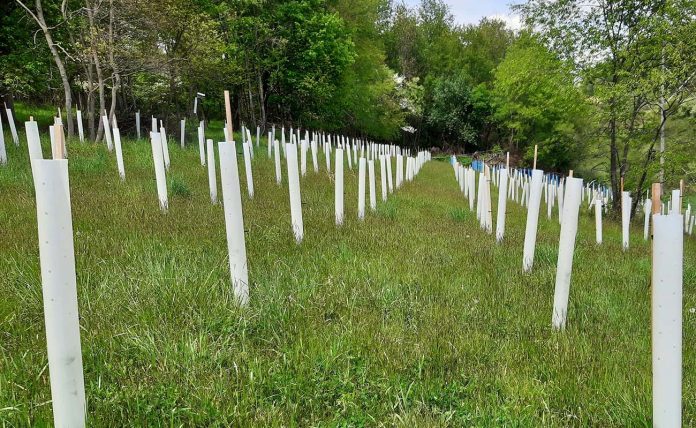
Have you ever wanted to improve the wildlife habitat on your property? Maybe you wanted to provide more cover or a better food source for wildlife. You might even have thought about planting some trees and shrubs and went as far as to pick out what species and varieties you wanted to plant.
If so, there are a couple of things you should consider before starting your wildlife planting. What wildlife species are you trying to attract? You also want to look at the location where the planting will take place. Other items to consider would be the timing of your planting, where you get your nursery stock and the diversity of your planting.
Being able to answer these important questions will get you headed in the right direction and save you some frustration later on down the road.
Species
The first thing you will want to look at is what wildlife species you are wanting to attract with the planting. Are you going to focus on a single species, maybe two species, or are you trying to attract wildlife species in general? Knowing this information will help you to determine the number and type of plant and shrub species you will use for your planting.
For example, doing a wildlife planting for deer and turkey will be slightly different then doing a planting for birds and butterflies. While many of the same trees and shrubs could be used for both types of wildlife plantings, you are probably going to use more hard mast species for the deer and turkey and more soft mast species for birds and butterflies.
Now, if your goal is to provide habitat for all these wildlife species, you are going to have a good mix of both hard and soft mast trees and shrubs. By planting a diversity of hard and soft mast species, you ensure that there is a variety of food and cover for all wildlife.
Location
The next thing to consider is the location of the wildlife planting. Are you going to be planting on top of a hill where it is dryer, in the bottom of a valley that is prone to flooding or maybe on strip mine ground?
You also want to look at the soil type or types in the areas where you are doing the planting, by using U.S. Department of Agriculture Natural Resource Conservation Service Web Soil Survey. This information can be very valuable in helping to find out the drainage class of the soil, frequency of flooding, typical soil profile and much more information.
All these factors are going to affect what species you are going to be able to plant in those specific areas.
Other factors
This leads us into our next considerations of when to plant, what nursery stock to buy and how diverse to make your planting. Whether you are planting evergreen or deciduous trees and shrubs, spring planting is recommended for bare-root seedlings.
Fall plantings are not recommended due to plants not being able to get established and frost heaving, exposing the roots and drying them out. Bare-root seedlings can be planted in early spring once the ground thaws out, up until the end of April.
When selecting nursery stock, be sure to order from a reputable nursery and from a nursery that is growing the stock in a similar climate as where you will be planting them. Here in Ohio, we can have some cold, harsh winters and you are going to want plants that can withstand the cold temperatures.
You also want to place your order as soon as the nursery will allow you. Sometimes nurseries will sell out of stock quickly, so if you wait a couple weeks before you’re ready to plant before placing your order, they probably will not have the plants you want. If this happens, you could try your local soil and water office. Some offices have annual tree sales in the spring.
Another consideration is species diversity in your planting. The greater the number of different hard and soft mast species you use, the more successful the planting will be.
This will make your wildlife planting more resilient to changes in weather conditions, attacks from diseases and pests and the soils you will be planting into. This will ensure that there is plenty of food and cover for the wildlife you are trying to benefit.
Research
It’s important to take the time and research the wildlife you want to attract, where you are doing your planting and the plants you want to plant.
The Ohio Department of Natural Resources Division of Forestry, Division of Wildlife and the USDA Natural Resource Conservation Service have many technical sheets available to help with this research. If a wildlife planting is something that you have thought about doing, but don’t feel comfortable doing it on your own, feel free to contact our office at 330-627-9852 or call your local soil and water office for assistance.












